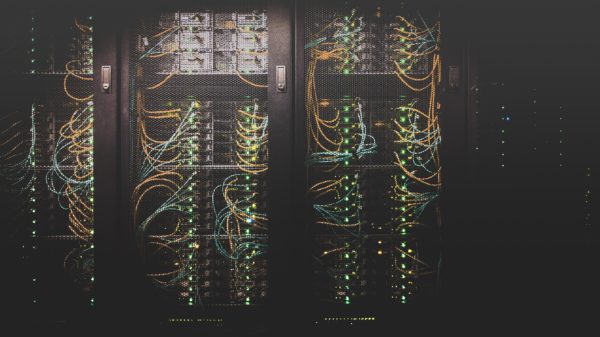Chances are you’ve already replied to a few emails today, sent some texts, taken some pictures on your phone, scrolled on social media and completed an online search. Later today, you might stream some music, some videos, a tv series or a movie on a digital platform. Did you know that these actions have a surprising effect on the environment? Though these simple, daily online actions are not physically tangible, they have a toll on global warming, through indirect and direct carbon emissions.
An abstract form of pollution: Indirect carbon emission
 With the rise of cloud infrastructure, collaborative tools, virtual environments and the use of digital files and e-books instead of paper ones, technology is often presented as a green alternative. However, each action that we perform using digital technologies comes at an environmental cost. That cost is a gram or two of carbon dioxide (CO2) emitted into the atmosphere. This emission of CO2 is the result of the energy needed to power electronic devices and internet networks, as well as to sustain data centers and servers that store a user’s content. Data centers consume significant quantities of electricity because they operate 24 hours a day, 365 days a year. The electricity is used not only to power their systems, but also for maintaining strong internet connections, generators, ventilation, and cooling systems. These emissions are indirect.
With the rise of cloud infrastructure, collaborative tools, virtual environments and the use of digital files and e-books instead of paper ones, technology is often presented as a green alternative. However, each action that we perform using digital technologies comes at an environmental cost. That cost is a gram or two of carbon dioxide (CO2) emitted into the atmosphere. This emission of CO2 is the result of the energy needed to power electronic devices and internet networks, as well as to sustain data centers and servers that store a user’s content. Data centers consume significant quantities of electricity because they operate 24 hours a day, 365 days a year. The electricity is used not only to power their systems, but also for maintaining strong internet connections, generators, ventilation, and cooling systems. These emissions are indirect.
Digital carbon footprint is a very abstract form of pollution as it’s not visible to the eye. Jens Gröger of the Öko-Institut, a research center for sustainable development, estimates that each online search emits around 1.45 grams of CO2. Turn that into 50 search queries per day and CO2 emissions total approximately 26 kilograms per year. Imagine that number on a worldwide scale in which there are 5 billion active internet users on Earth.
Manufacturing devices: Direct carbon emissions
 Other than the CO2 emitted from the usage of electronic devices and cloud computing, it is important to consider the effect that the production of devices has on the environment, from the process of mining the metals and minerals used to make electronics to the actual manufacturing of the devices. The whole process of fabrication emits significantly more CO2 as opposed to the operational life cycle of a device.
Other than the CO2 emitted from the usage of electronic devices and cloud computing, it is important to consider the effect that the production of devices has on the environment, from the process of mining the metals and minerals used to make electronics to the actual manufacturing of the devices. The whole process of fabrication emits significantly more CO2 as opposed to the operational life cycle of a device.
Also, if we factor in planned obsolescence and “wanting to buy the latest model”, mountains of obsolete devices are piling up. Some are being recycled properly, while others aren’t. In the United States, ERI (Electronic Recycling and IT Asset Disposition) operates several giant electronic recycling centers. In their Fresno center, approximately 6 million pounds of discarded electronics get processed every month. Alana Semuels of Times underligns that electronic waste is currently one of the world’s fastest growing solid-waste streams. These types of emissions associated with manufacturing and disposal are called direct carbon emissions.
Technology that reduces emissions
On the other hand, technology plays an increasingly important role in the world. According to Ericsson, a leading company in ICTs, “technology has huge potential to be a key driver for a more sustainable world”. Video conferencing tools allow us to communicate with people from different places, even countries, resulting in less travel. It can also connect remote healthcare to rural areas that previously could not access health professionals. The opportunities for using technology are rising, such as campaigns, funding and collaborations for climate change, protecting the environment and sustainable development. Machine learning and automation also have potential to reduce carbon emissions in various sectors and industries.
 Technology is helping to reduce global carbon emissions and has a huge potential for changing the world, but is also contributing to greenhouse gas emissions. The carbon footprint of our gadgets could double by 2025, according to the BBC. Calculating carbon footprint is a difficult task as it depends on a sufficient understanding of all processes, from manufacturing a device, to the operational use of that device, to the number of years it’s optimized, to its disposal… and don’t forget the powering of servers used to store or stream data.
Technology is helping to reduce global carbon emissions and has a huge potential for changing the world, but is also contributing to greenhouse gas emissions. The carbon footprint of our gadgets could double by 2025, according to the BBC. Calculating carbon footprint is a difficult task as it depends on a sufficient understanding of all processes, from manufacturing a device, to the operational use of that device, to the number of years it’s optimized, to its disposal… and don’t forget the powering of servers used to store or stream data.
Is technology really “greener”? What if we compare the carbon footprint of paper vs technology for reading books? In his article, Mike Berners-Lee of Lancaster University mentions that “reading books is a low-carbon activity, however you go about it”.
E-readers are a slightly better option, but it depends on how long you use the device and how often. It remains difficult to accurately compare technology to paper resources, because the utility made of an electronic device and its “life cycle assessment” varies from one user to another, and the two commodities are so different. “We have to be careful when we pin one product against the other and say it’s better. It’s a tricky thing to do if you don’t have all the data to back it up,” said Arpad Horvath, a professor of engineering at the University of California-Berkeley, who published a study on the environmental impact of wireless technologies in 2014. The common conclusion and bottom line is that everyone (individuals, companies, etc) should be mindful of their digital behaviour and consumption levels in order to help reduce technology’s carbon footprint.
What actions can be taken?
A digital carbon footprint is influenced by different factors such as the number of devices you own, how long you use them and how you use them, as well as how electricity is produced in your country. For example, carbon emissions needed to create electricity vary from one place to another (hydro, wind, solar, or nuclear).
 As for purchasing devices, Joshua Martin of the Environmental Paper Network puts it simply: “you shouldn’t buy something you don’t need.” If you’re thinking of buying a tablet just to take notes, reconsider that purchase. He adds, “[t]ablets don’t directly result in deforestation, but they do require rare earth metals like coltan that are mined in environmentally (and politically) sensitive areas like the Congo.” On the other hand, if you own a tablet, consider using it for note-taking instead of buying paper. Optimize the devices that you already own. Always aim to respect these four Rs: reduce, repair, reuse and recycle. The order is not intentional, but after reflection, represents a logical sequence to follow.
As for purchasing devices, Joshua Martin of the Environmental Paper Network puts it simply: “you shouldn’t buy something you don’t need.” If you’re thinking of buying a tablet just to take notes, reconsider that purchase. He adds, “[t]ablets don’t directly result in deforestation, but they do require rare earth metals like coltan that are mined in environmentally (and politically) sensitive areas like the Congo.” On the other hand, if you own a tablet, consider using it for note-taking instead of buying paper. Optimize the devices that you already own. Always aim to respect these four Rs: reduce, repair, reuse and recycle. The order is not intentional, but after reflection, represents a logical sequence to follow.
-
- Reduce consumption and refrain from wanting to buy the newest smartphone model when your current device is still functional.
- Repair broken devices when possible. Instead of replacing the entire device, try only replacing the faulty piece.
- Reuse devices by purchasing them second-hand or refurbished. Also consider selling or giving away devices that are no longer being used.
- Recycle devices the proper way by bringing them to a supplier or recycling plant who can recycle certain components of the device. If you’re in Québec, Recycle my Device shows a map of drop-off points where you can responsibly dispose of devices.
For all intents and purposes, the trend towards sustainability will continue within and without the classroom. Educators are able to lead the next generation by example and model sustainable behaviours as our society grapples with the growing amount of e-waste. In order to reduce indirect carbon emissions, here are some simple actions that can be taken:
-
- Clean your email inbox regularly and delete emails that you no longer need, because storing an email emits CO2. Think of deleting calendar invites and archives you won’t use again. According to Unicef, “if every single person in France deleted 50 emails, the energy savings would be equivalent to turning the Eiffel tower’s lights off for 42 years, or to New York City not consuming any electricity for 4 hours.”
- Unsubscribe from unwanted newsletters.
- Use collaborative tools to share the same document or pictures to several people instead of sending them individually. Be aware of which tools you use
- Turn off video in videoconferencing and use audio only. Every hour of video conferencing creates approximately 1 kg of CO2. Using audio can reduce those emissions by 96%.
- Use an ecological search engine such as Ecosia, that donates 100% of its revenue to nonprofit organizations focusing on reforestation.
- Limit your usage of cloud-based storage and store data on hard drives.
- When streaming videos, turn off AutoPlay or don’t stream videos that you’re not actually watching. According to Climate Impact Partners, “Netflix and YouTube combined represent more than 50% of internet traffic at peak times in North America.”
- Choose a cloud provider that uses renewable energy as a power source. Climate Impact Partners mentions that “many major brands have committed to 100% renewable energy.” Some include Apple, Microsoft, Google and Facebook.
- Don’t use your phone’s GPS just to use it when you know where you are going.
- Instead of streaming music in your car, listen to old or used CDs or the radio.
I acknowledge that…
 This blog article and the research I conducted prior to writing it has increased my digital carbon footprint. I conducted many internet queries, charged my computer battery, wrote it on a cloud based program and published it on a site that is stored on a server that needs energy to run it. However, I considered the information to be shared in this article was valuable and could contribute to creating a certain awareness. Throughout my research, I became mindful of my actions. When I learned about Ecosia, I used it for my internet searches. I also cleaned my email inboxes and unsubscribed from unnecessary newsletters. I’m hoping this article will inspire you too to change some of your digital and consumer habits.
This blog article and the research I conducted prior to writing it has increased my digital carbon footprint. I conducted many internet queries, charged my computer battery, wrote it on a cloud based program and published it on a site that is stored on a server that needs energy to run it. However, I considered the information to be shared in this article was valuable and could contribute to creating a certain awareness. Throughout my research, I became mindful of my actions. When I learned about Ecosia, I used it for my internet searches. I also cleaned my email inboxes and unsubscribed from unnecessary newsletters. I’m hoping this article will inspire you too to change some of your digital and consumer habits.
…I’ll also make an extra effort to not fall asleep in front of Netflix!





